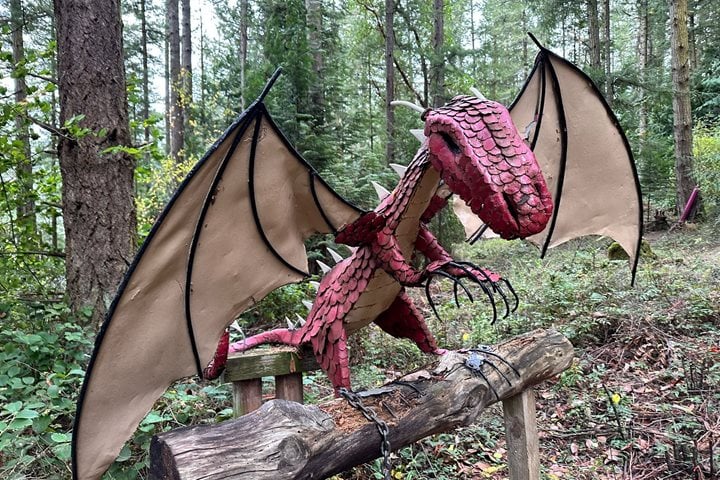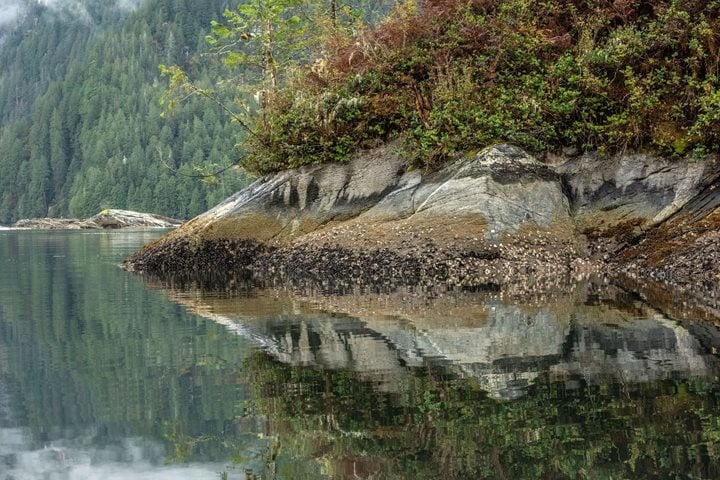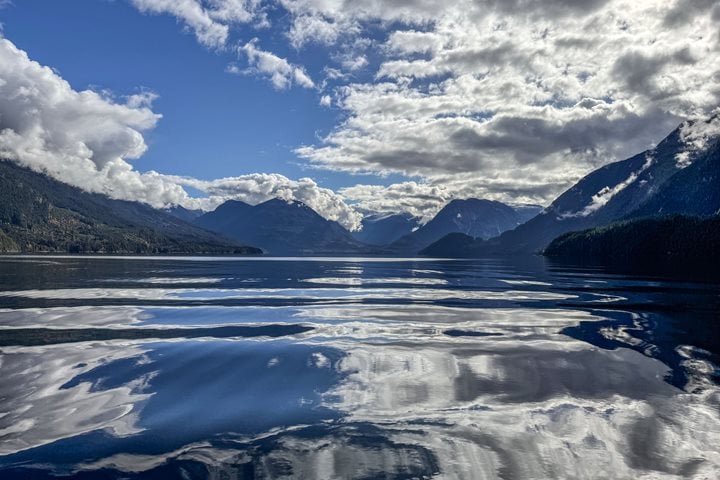The constellation Orion was still visible in the sky as National Geographic Sea Bird entered Black Fish Sound, a body of water that runs along the mainland of British Columbia inside Johnstone Strait. The sun began rising in the east just after 8 a.m. on another clear, fall day. Looking all around National Geographic Sea Bird in every direction one could spot humpback whales. The air wasfilled with the sound of common murres who landed on the sea around our ship and then dove rapidly out of the way. All kinds of wildlife were feeding in the rich waters of this sound. The humpbacks were lunging across the surface, taking in huge gulps of water and small fish. The murres were catching the same small fish one at a time. To add to the experience, the long shadows of fall light were gorgeous! Backlit whale blows, diving birds, and distant mountains all showed off the beauty of this place.
In late morning, we began our transit toward Alert Bay where we were hosted by the ‘Namgis band of the Kwakwaka’wakw people. Upon arriving and checking with the port captain, we were informed that a totem pole was being completed for an up-and-coming potlatch. We were divided into several small groups to enjoy walks through the village. One group made their way to a makeshift carving shed where a nearly completed totem pole was being designed for form-line and painting. A crew of 10 carvers and painters were busy as we arrived. Wayne Alfred, one of the master carvers of Alert Bay, introduced us to the team and explained the process.
We reconvened in the late afternoon at the
The central fire was lit. The sand and dirt floor was covered in eagle down from a recent potlatch. Upon entering the front door, we were greeted by two elders from the T’sasala Cultural Group. During the next hour and a half, we experienced what the Kwakwaka’wakw people call cultural sharing. A variety of dances were introduced by many members of the group, each taking a moment to explain in their own words the importance, personally and cross-culturally, of being invited into a traditional Big House. As one young chief said, “Our lives are very similar to
We then found ourselves dancing in a circle around the central fire and celebrating the resilience of this vibrant group of people. As is the custom in the Big House, guests never go hungry! We shared a lovely spread of freshly barbecued sockeye salmon and







